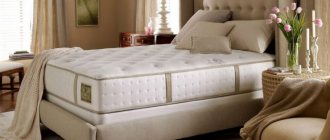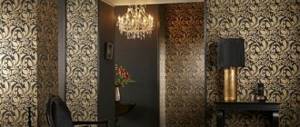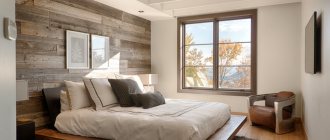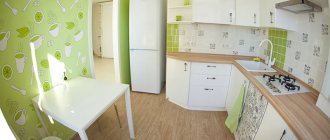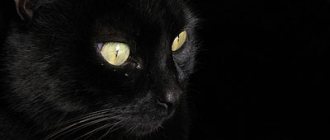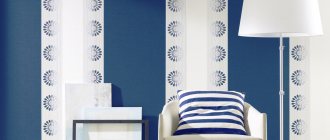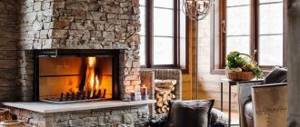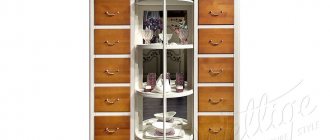Decor with vases
Many people underestimate the decorative value of vases in the interior. Some people consider vases to be unnecessary trinkets. Someone keeps them in the closet and takes them out only when necessary to place flowers. But vases, often acting almost imperceptibly, make the interior more interesting, original and elegant. Some designers claim that there can never be too many vases in an interior. However, this applies to those cases when the vases and places for them are selected “with feeling, sensibly, with arrangement.” Let's talk about how to decorate the interior with vases - floor and tabletop.
Vases for interior decoration: the choice is limitless
What are vases made from nowadays? Made of glass, metal, wood, wicker, rattan, ceramics, porcelain, plastic, bamboo... And what a variety of shapes! Elongated, “pot-bellied”, rectangular, conical, cylindrical, curved, in the shape of a bowl, jug, pot or coffee pot... With such a wealth of choice, it would be a shame not to decorate your home with a couple or three, or even a dozen vases.
How to choose vases for the interior? After all, the assortment is amazing - where to stop? First of all, you need to decide what task the vases will solve, and depending on this, make a choice. It is worth considering that vases that perform different tasks can coexist perfectly in one house. At the same time, the vases will be completely different in shape, color, and style. The combination of several different vases in one house and even in one room is not only not forbidden, but even encouraged. If only they fit well into the surroundings.
Vases are available as tabletop or floor vases. Floor vases include vases with a height of approximately 40 cm. If the vase is lower, it is better to place it on a different level - on a table, cabinet, shelf, window sill.
If the vase is narrow and elongated, you can put one tall flower in it. Compositions of branches, herbs, dried flowers, bamboo, etc. are also placed in such vases. But lush bouquets are best placed in large vases. A single flower in a “plump” vase looks lonely and uninteresting.
In addition to flowers, branches, grasses and twigs, artificial or real, vases are decorated with LED branches and garlands.
In general, if a vase is beautiful, then it is absolutely self-sufficient, so it is not at all necessary to put something in it - it is optional.
Choosing plants for the garden
Particular attention should be paid to the choice of plants. Here you need to take into account that there will be little space and plants with a small root system and small sizes are suitable.
At the same time, they must be unpretentious to the conditions. When caring for flowering plants, you will need to remove faded flowers, and this is inconvenient to do in a glass vessel. It is better to opt for decorative foliage plants.
Note! Fabric paintings - how to create them yourself? Instructions with ideas in the photo!
Calamus will be a good decoration for a garden in a bottle. It grows slowly, tolerates lack of moisture well, and grows to a height of just over 20 centimeters. And its green leaves with a creamy tint will look good in any version of the selected landscape.
The decoration of the garden behind the glass will be a royal begonia, its height does not exceed 20 centimeters. A fern will look good in a low container and will add mystery to the composition.
You can use different plants, but you need to take into account all of them; they should not exceed 20 centimeters in height and should tolerate high humidity.
Vases in the interior: they can do a lot
1. Creating a festive mood. Vases are traditionally taken out of pantries and cabinets before the holidays. Regardless of the occasion, they are filled with flowers, and before Easter - with branches with buds and the first leaves. Fir branches with Christmas tree decorations are placed in vases for Christmas and New Year. Transparent vases are filled not only with flowers and branches, but also with fruits, berries, Christmas balls, etc. A vase with decor that suits the occasion brings a festive mood to the interior and enlivens it.
However, a festive atmosphere in the house is always appropriate, and not just on the eve of celebrations. For example, the dining table where the family gathers should be decorated for no reason. A lovely vase in the center of the table, with flowers, branches or even empty, is a stunning decoration for the dining area. The decorated dining area stands out from the general space. This is “transparent” zoning in the kitchen or living room.
A vase in the center of the table makes the dining area more elegant, solid, and majestic. If the table is large, you can place a group of vases in the center.
2. Filling voids. Unlike nature, which does not tolerate emptiness, the interior can easily do without completely filling the free spaces. However, it is important to maintain a balance and not go to extremes: both overly filled and overly ascetic interiors are equally uncomfortable. Interior vases are the decorative element that best copes with the task of filling voids without leaving an “overflow” effect.
Vases are good everywhere. Corners, niches, alcoves, shelves, empty countertops can be decorated with vases. Vases can be placed in any limited spaces that cannot accommodate any furniture. They will decorate this area of the interior and make it more comfortable.
Both single vases and groups of vases are placed under stairs, in niches of false fireplaces, and on tables. Wall shelves are also filled with vases of different shapes and sizes. Collections of vases are displayed in group niches, on shelves, and in display cases. Traditionally, mantelpieces are also decorated with vases.
3. Emphasizing style. Vases as decor are beautiful in their diversity. If you want, you can choose a vase or group of vases for the interior in any style. Moreover, the vases will not only fit into the interior, but, along with other interior elements, will set the style.
For example, glass and metal vases are ideal for a modern-style interior. They fully comply with the aesthetics of high technology (high-tech): they reflect and transmit light, give the interior additional shine, shine and shimmer, attract with the novelty of their form, but at the same time they look quite modest and minimalistic.
To emphasize the ethnic style, they use vases with national ornaments, traditional paintings - for example, with a Greek meander, hieroglyphs, images of Egyptian pyramids or animals sacred to a particular people, etc. Products with primitive shapes and items made from traditional materials will also make a statement about style.
For an ecological, tropical, marine interior, vases lined with shells, as well as wicker, wood, and bamboo are suitable. Mosaic vases will become a fabulous decoration for an Arabic interior. Terracotta ceramic vases, reminiscent of gardener's or farmer's pots, will highlight Mediterranean and country styles.
In all these cases, the vase plays the role of not the last violin, because it serves as a style-forming element.
4. Bright accents. Vases, along with cushions, throws, lamps and frames, are used to incorporate a pop of color into the interior. Rich color accents in the interior make the room interesting, effective and certainly not boring.
The good thing about vases is that these bright accents can be placed at different levels: for example, on the floor, coffee table and high-hanging shelf.
How to choose the color of a vase for interior decoration?
Choosing the color of a vase for the interior is a fascinating activity, fortunately there are no rules. We come up with them ourselves. However, it never hurts to see examples. How do designers choose the color of vases?
If the furniture is very beautiful, stylish, expensive, it is on its color, material, texture that you want to focus your attention. In this case, vases are matched to the color of the furniture , be it wooden cabinets and cabinets or upholstered chairs. Vases do not draw attention to themselves, but on the contrary, they attract it to the furniture.
Vases located near the wall can either merge with it or contrast. The contrasting option is especially good if the interior is dominated by two colors - for example, brown and beige. Brown vases, standing, say, on a shelf, will set off the beige walls, and ivory-colored vases will look touching on a dark brown table. This technique, of course, is suitable not only for a brown-beige interior, but also for many other two-color plans.
Vases in the color of the walls - this solution seems less interesting, but it also makes sense. These decorative elements set against tone-on-tone walls add dimension and texture. The space doesn't look flat.
If you decide to introduce splashes of color into the interior, vases can be selected in accordance with the accent color . Combinations also turn out to be interesting: for example, two vases of the same shape are placed next to each other, but one is an accent, and the second matches the color of the furniture.
In general, by combining vases of different styles and colors, you can achieve amazing decorative effects. Don’t be afraid to combine antique and high-tech vases in the same interior. Just arrange assorted vases at different height levels.
Another option for the color scheme of a vase is to make it a focal point , that is, not to tie the vase to anything at all. But it should be either a very large, luxurious vase, or a group of small vases. A single accent should be impressive.
What shape to choose a flower vase
Vases can have a wide variety of shapes: cylindrical, square, spherical, etc. But not every one of them can emphasize the beauty of a bouquet. For example, short wildflowers will look awkward in a tall vase shaped like a cylinder, while large roses with long stems will look awkward in a ball model. Remember that the length of the stems, the size of the buds and the number of flowers should all be taken into account when choosing a vase shape.
Flowers with long shoots look best in long vases (for example, cylindrical or oval). Wide bouquets with short “legs” are more suitable for low products with a wide neck. If the flower heads are small and the stems are stiff and wide, they will look best in wide containers with a narrow neck, for example, in bottle vases.
Ball vase
In such models, lush bouquets of wildflowers look good, as well as flower heads floating in the water. These can be rosebuds, daisies and orchids. Hydrogel beads are often used instead of water. This is a great option for decorating a table for a wedding or reception.
Another win-win option is a large number of flowers with small and rigid stems. Bouquets of roses, daisies, chrysanthemums, carnations and lilies are perfect. In this case, the flower heads must be placed above the vase in the shape of a dome.
Vase-cylinder
Cylindrical vases go well with flowers on long stems and with large heads (roses, gladioli, sunflowers, peonies, hydrangeas).
Bottle shaped vases
Lush bouquets are completely unsuitable for bottle-shaped models. Such vases go well with a small number of flowers on a long stem (peonies, tulips and carnations) or one large flower.
Vases in the shape of a pot
Such models are suitable for lush and large bouquets. It is better not to place flowers with thin stems and small heads in such vases.
Square and cube vases
For such products, choose flowers with strong stems. Square, tall vases are suitable for bouquets with lots of leaves, while cube-shaped containers are suitable for lush armfuls of flowers with small stems.
Vases in the form of a cone
Such products are suitable for heavy and lush bouquets. Flowers such as roses, freesias, chrysanthemums and peonies look good in them.
Combining vases in the interior
Groups of vases are always impressive and original. By forming a group, you show your rich imagination and good taste. You can group absolutely identical vases. It’s not very original, but it’s trouble-free, and most importantly, it’s very eye-catching.
Mixed groups look fresher and more creative. For example, they mix vases that are identical in shape but different in color. Or identical in design and color, but different in shape. By the way, manufacturers themselves often combine such products into pairs and groups and sell them in sets at once.
In the photo: fashionable vases from Normann Copenhagen
Author: Elena Kravtsova

